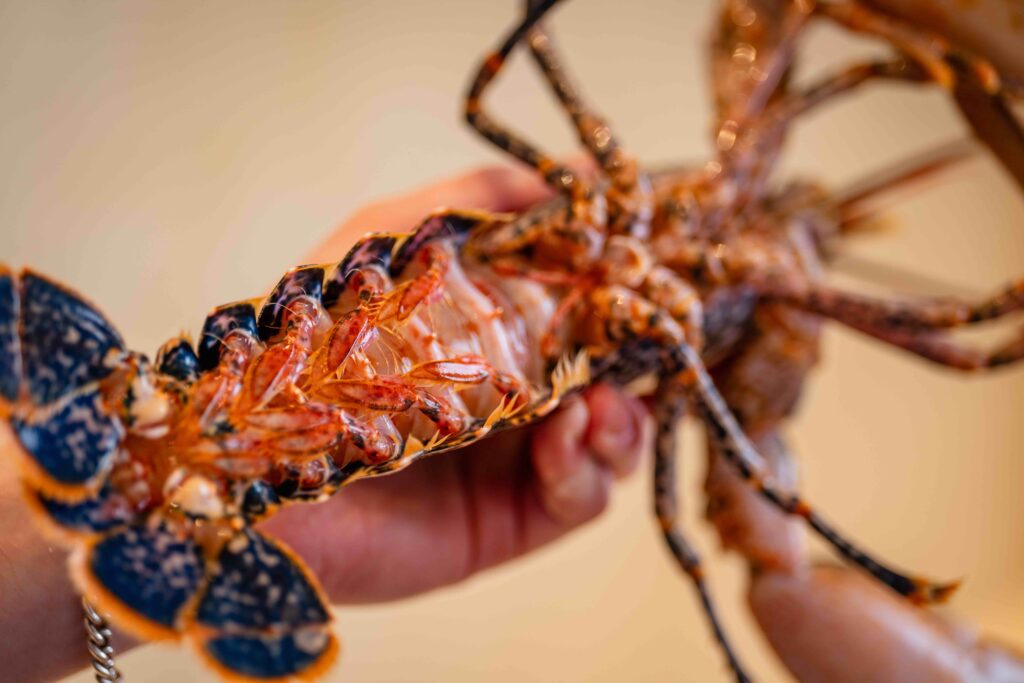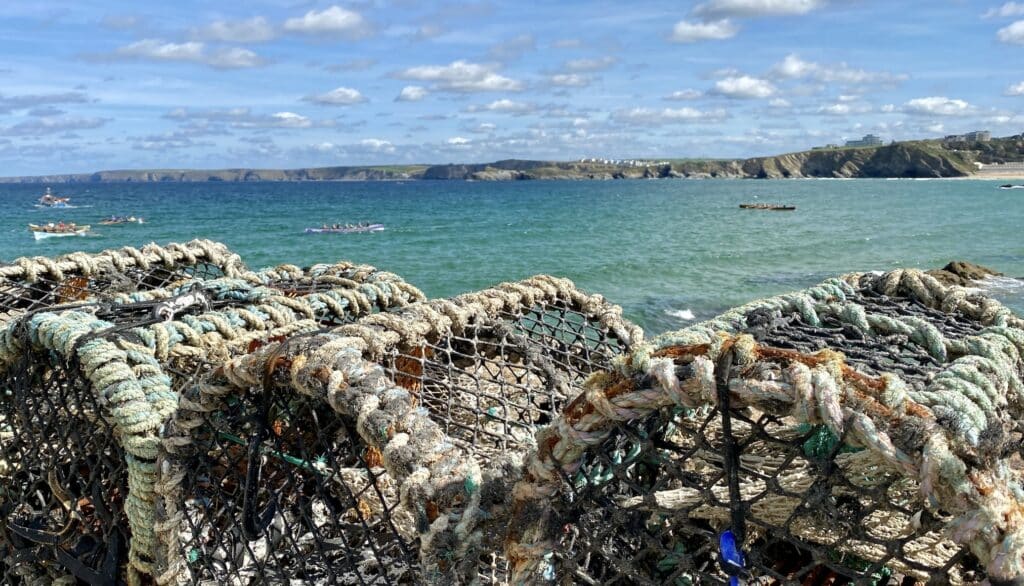![]()

![]()


Lobster is one of those classic dishes we all love and depending on season can be a little pricey at times. Lobster fishing has deep roots in coastal communities, where the sea has been a source of food thousands of years. The practice dates back to prehistoric times when early coastal societies discovered the abundance of lobsters in tidal waters. When we say our early ancestors were hunter gatherers, it evokes images of stalking through forests and meadows but in fact most populations especially on our island clung to the shoreline and found easy pickings like shellfish including oysters we have previous journalled. These early fishers would collect lobsters by hand during low tides when the crustaceans became trapped in tidal pools. They cooked them over open fires or preserved them by drying them in the sun, using simple methods that even today top restaurants like ourselves still use. Nothing beats a lobster cooked over a woodfired grill.
Despite lobsters being plentiful and easy to harvest, they were once regarded as lowly food (just like pre Victorian era oysters). In coastal areas , lobsters were so common that they were considered food for the poor and were often fed to prisoners and indentured servants. However, as lobster fishing techniques evolved and the crustacean became less abundant, its value shifted. By the early-19th century, the urbanisation and industrial revolution allowed lobsters to be shipped to cities and inland, where they gained a reputation as a luxury food, particularly in urban restaurants. Over time, lobster went from being “poor man’s food” to a prized dish for the aristocracy.
The development of lobster fishing itself saw significant innovation during the 19th century. The introduction of lobster pots or traps made the harvesting process much more efficient. These traps, crafted from wood and netting, allowed lobsters to crawl in for bait but trapped them inside. Initially used in North America, this technique soon spread to other lobster-rich areas, including the UK. Along the UK’s rugged coastlines, particularly in regions such as Scotland, Cornwall, and Devon, lobster fishing became an important industry for local economies. Scottish waters, especially around the Hebrides, are renowned for providing the ideal habitat for lobsters, thanks to their cold, nutrient-rich waters.
As the lobster industry grew, so too did concerns over sustainability. Even in the 19th century, fishers recognized the need to protect lobster populations from overfishing. In the UK, traditional methods such as hand-hauling traps and releasing egg-bearing females have helped conserve the lobster population. The practice of V-notching, where breeding females are marked with a small notch on their tail before being released, was adopted to ensure the lobster population could continue to grow. Regulations today ensure that fishers adhere to size limits and release undersized lobsters, while biodegradable escape hatches in traps allow juvenile lobsters to avoid capture, protecting the future of lobster stocks.
Lobster fishing remains a deeply rooted cultural practice in shoreline communities. Families pass down techniques and traditions through generations, with a strong respect for sustainable fishing practices. While modern technology has made fishing more efficient, the essence of the craft, centred around maintaining a healthy lobster population, remains unchanged.

Although lobsters can be caught throughout the year, here at Faber we focus on having on our menu in the peak season, when they are most abundant and of the highest quality, this typically runs from late spring to early autumn. The best catches are often between May and September, a period when lobsters are more active and tend to be found closer to shore, making them easier to catch (in fairer weather). This seasonal abundance allows for the harvesting of lobsters at their prime, ensuring both quality and sustainability. We also work with our suppliers to use “crippled lobsters” refers to those that have lost one or more limbs, typically due to natural predation, injuries, or handling by fishermen. Although these lobsters might be perceived as less desirable due to their appearance and reduced market value, their meat is just as amazing.
Here’s how we reckon you should cook a fresh lobster…
We Always buy lobster from trusted sources we use lockdown lobster, Portland shellfish, Henderson’s and Finn & Flounder. Whether from a local fishmonger or straight from the sea, preparing it for the BBQ is an experience worth trying. The first step is selecting a live lobster, preferably around 500g – 800g, which is an ideal size for grilling. For a humane preparation, you can place the lobster in the freezer for about 20 minutes to numb it before cutting. To prepare the lobster for cooking, lay it on its back on a cutting board, with the tail facing toward you. Using a sharp knife, insert the blade just behind the eyes and press down to dispatch the lobster quickly. Then, split the lobster in half lengthwise, cutting through the body and tail. Remove the digestive tract, located along the length of the tail, and discard the green tomalley and any dark sacs in the head. Crack the claws using a mallet or the back of a knife, which will help the lobster cook evenly on the grill.
To enhance the flavour, brush the lobster’s flesh melted butter. You can add simple seasonings like sea salt, freshly ground pepper, and herbs such as parsley or garlic (we keep it nice and simple but when we push the boat out it’s basted in XO). A squeeze of fresh lemon juice adds a bright, fresh note. Preheat your BBQ to medium-high heat (loads of hot embers), ensuring the grill is clean and well-oiled to prevent sticking. Place the lobster flesh side down on the grill, cooking it for 3 to 5 minutes to get a nice sear. Then flip it over and cook the shell side down for another 5 to 6 minutes, basting occasionally with butter (or XO) to keep the meat juicy. You’ll know the lobster is done when the flesh turns opaque, and the shell takes on a bright red colour. The meat should be firm, and if you have a thermometer, check for an internal temperature of 135°F (57°C).
Once the lobster is grilled to perfection, remove it from the BBQ and serve immediately. A final squeeze of lemon juice and a sprinkle of fresh herbs can elevate the dish, making it a perfect summer feast. Don’t forget a finger bowl!
And don’t forget to save the shell to make incredible stocks to go into soups and sauces, recipes for another day!
We’ve been invited to host our very ow Chef’s fish counter and tasting menu at The Holborn Dining Room, part of The Rosewood Hotel London.
Read moreThis summer we’ll be taking up residency in collaboration with Setlist @ Somerset House. Shucking oysters on the riverside terrace
Read moreFaber’s Private Hire Oyster Bar adds a unique and luxurious touch to weddings, private parties, and corporate events.
Read more
